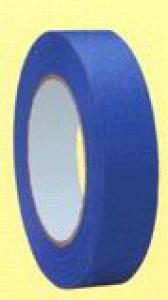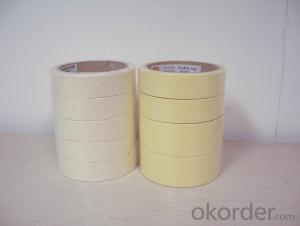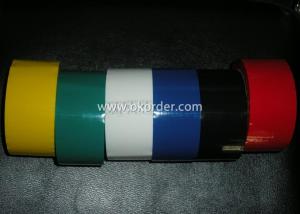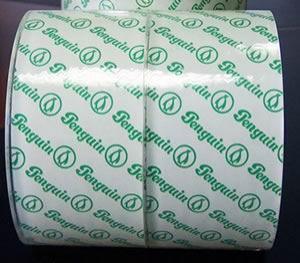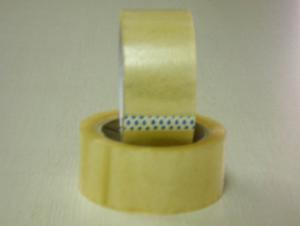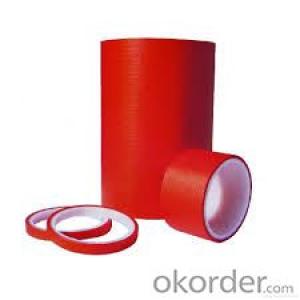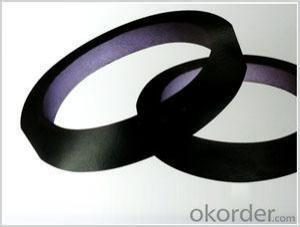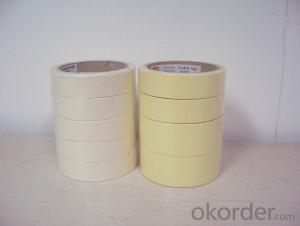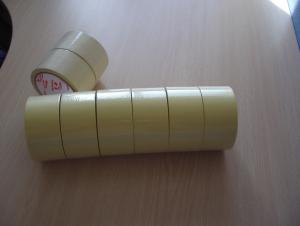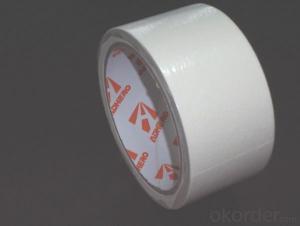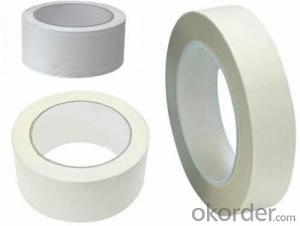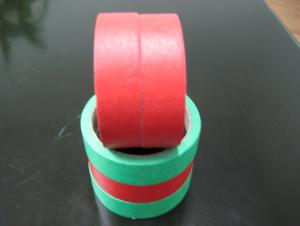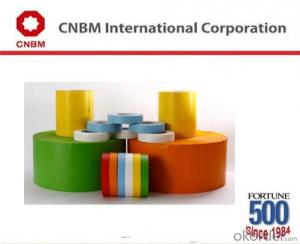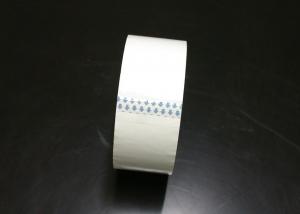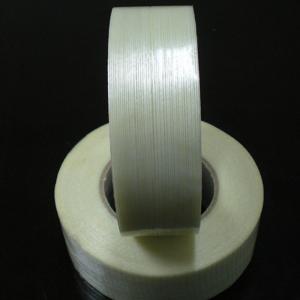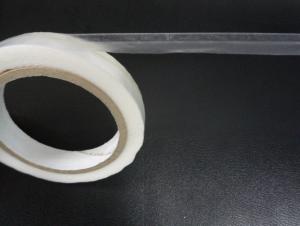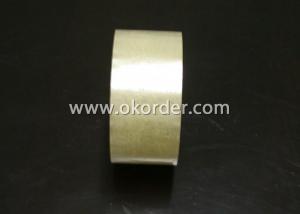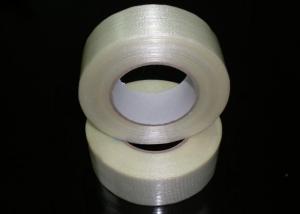3M Tartan Masking Tape for High Quality Painting Application
- Loading Port:
- Fuzhou
- Payment Terms:
- TT OR LC
- Min Order Qty:
- 5000 roll
- Supply Capability:
- 20000 roll/month
OKorder Service Pledge
OKorder Financial Service
You Might Also Like
Introduction of Masking Tape
Masking tapes are made of paper coated with acrylic adhesive or rubber based adhesive.
Application of Masking Tape
Interior paint masking, silk screening, Light duty packaging, bundling, holding, splicing &Tabbing, and other non-critical applications where a pressure-sensitive tape is needed.
Advantage of Masking Tape
1.Masking tape, superb tack and adhesion to surface, Strong grip that is ensured because of an excellent adhesive backing.
2. Peak performance even under extreme conditions of pressure and temperature, which can stick to all types of surfaces.
3. Consistent quality
4. on time delivery
5. Effective and timely communication
6. Competitive price
Packing of Masking Tape
Jumbo rolls & log rolls: Packed with kraft paper and stretch wrap film, with or without pallet
Cut rolls: Shrink package, placed in cartons, with or without pallet
Jumbo rolls & log rolls: Packed with kraft paper and stretch wrap film, with or without pallet
Size of Masking Tape
Paper Core ID: 76mm
Jumbo size: 0.99m x 1800m, 1.22m x 1800m, 1.51m x 1800m
Cut roll size: As per customer's requirement
Cut rolls: Shrink package, placed in cartons, with or without pallet
Pictures of Masking Tape


Specification of Masking Tape
| Material | Masking tape |
| Adhesive Side | Single Sided. |
| Adhesive | Rubber based acrylic adhesive |
| Acrylic | Rubber |
| Color | White/yellow/black/orange /brown/blue/red/ green |
| Normal thickness | 150mic, 160mic, 170mic, 180mic, 190mic, 200mic |
| Packaging | Single packed, shrink film packed, depend on customer’s request |
Remarks:
1. The data above are typical results and subject to change without notice.
2. Tolerance: Weight and Thickness: ±10%; Width: ±3mm;
Length: Cut Roll & Log Roll ±0.3m, Jumbo Roll ±0.5%.
3. The products should be stored at room temperature and kept from wet and heat source.
4. It is essential, as with all pressure-sensitive tapes, that the surface to which the tape is applied must be clean, dry, and free of grease and oil.
5. The user should take test and do trial-application on the above products before coming into application so as to witness and ensure suitability for user’s special purpose and technique.
FAQ
1. What is the range of your products?
So far, we manufacture various kinds of double sided adhesive tape, masking tape, kraft tape and BOPP packing tape. To better meet your needs, we can also source other adhesive tapes for you if it is appropriate to do so.
2. What's the lead time for delivery?
We ensure you a prompt delivery of the goods. We do not stock any of the goods. The production cycle time of 1*20FCL is 2-3 weeks.
3. How many carriers does your double sided adhesive tapes have?
There are many carriers that our double sided adhesive tapes based on, which are tissue, PET, BOPP, PE foam, EVA foam.
4.Can you accept the cooperation way of OEM?
Upon receipt of formal authorization, we can accept OEM processing.
- Q: Can packaging tape be used for sealing foam?
- Yes, packaging tape can be used for sealing foam. Packaging tape is commonly used for sealing boxes and packages, but it can also be used effectively to seal foam. When using packaging tape to seal foam, it is important to ensure that the tape is securely adhered to the foam surface to create a tight seal. This can be achieved by applying pressure to the tape after it has been applied. Additionally, it is recommended to use a tape that is specifically designed for sealing foam, as these tapes often have stronger adhesive properties and are more resistant to temperature changes and moisture. Overall, packaging tape can be a convenient and effective option for sealing foam.
- Q: What are the considerations for using packaging tape on painted surfaces?
- When considering using packaging tape on painted surfaces, there are several important considerations to keep in mind. Firstly, it is crucial to assess the type and condition of the paint on the surface. If the paint is old, flaking, or in poor condition, using packaging tape may cause further damage such as peeling or chipping off the paint. In such cases, it is advisable to avoid using tape directly on the painted surface. Another important consideration is the adhesive strength of the packaging tape. Some tapes have strong adhesives that may stick firmly to the painted surface, making it difficult to remove without damaging the paint. It is recommended to test a small, inconspicuous area with the tape to ensure it can be safely removed without leaving residue or causing any harm. Furthermore, it is crucial to consider the duration for which the tape will be applied. If the tape is intended to be left on the painted surface for an extended period, there is a higher risk of it causing damage. Over time, the adhesive may bond more strongly with the paint, making it harder to remove without causing any harm. Additionally, the surface texture plays a role in determining the suitability of using packaging tape. Rough or uneven surfaces may not allow the tape to adhere properly, leading to lifting or peeling, which can damage the paint. Lastly, it is essential to consider the purpose of using packaging tape on the painted surface. If the objective is to protect the paint from scratches or damage during transportation or storage, alternative methods such as using protective sheets or bubble wrap may be more suitable and less likely to harm the paint. In conclusion, when considering using packaging tape on painted surfaces, one must assess the type and condition of the paint, adhesive strength, duration of application, surface texture, and the purpose of using the tape. By taking these considerations into account, one can ensure that the tape is used safely without causing any damage to the painted surface.
- Q: How do I prevent packaging tape from losing its color over time?
- Here are a few strategies you can try to prevent packaging tape from losing its color over time: 1. Properly store the tape: To maintain its color for longer, keep your packaging tape in a cool, dark, and dry place, away from sunlight and extreme temperatures. 2. Avoid moisture: Moisture can damage the adhesive and color of the tape, so store it away from areas prone to water leaks or high humidity levels. 3. Opt for high-quality tape: Look for packaging tapes made with better quality materials that are designed to retain color for a longer period. 4. Minimize exposure to air: After use, seal the packaging tape tightly to reduce its exposure to oxygen, which can contribute to color degradation. 5. Handle with care: Rough handling can cause the color to rub off or fade faster, so be gentle when applying and removing the tape. 6. Consider protective coatings: If the packaging tape is important for branding or aesthetic purposes, you can explore using protective coatings or laminates to add an extra layer of protection against color loss. By implementing these measures, you can extend the lifespan and vibrancy of your packaging tape, ensuring it remains visually appealing for a longer period of time.
- Q: How do you store unused rolls of packaging tape?
- In order to preserve the adhesive properties of unused rolls of packaging tape, it is crucial to store them in a cool and dry location. One possible option is to utilize a plastic storage bin or container equipped with a lid, as this will shield the tape from both moisture and dust. Another alternative is to employ a dedicated tape dispenser or a tape gun with a built-in storage compartment for extra rolls. This not only keeps the tape well-organized, but also prevents it from unraveling and becoming entangled. Remember to keep the rolls in an upright position to prevent any potential damage or deformation. By correctly storing unused rolls of packaging tape, you can guarantee that they will remain in optimal condition and readily available for use when necessary.
- Q: What are the benefits of using silent packaging tape?
- Silent packaging tape offers several benefits including noise reduction during packaging, increased productivity due to minimized distractions, improved customer satisfaction by avoiding noisy packaging, and a more pleasant work environment for employees.
- Q: Can packaging tape be used for sealing construction materials or tools?
- Yes, packaging tape can be used for sealing construction materials or tools, but it may not provide as strong or durable of a seal as other specialized tapes designed specifically for construction purposes.
- Q: I opened a shop in Taobao, to package the goods every day, is always to use the tape, I heard the tape is toxic, toxic if so how protection, what precautions, backup tape to keep it? Thank you ~ ~
- The adhesive used in the adhesive tape is very low in toxicity and has no side effects on the human body.
- Q: Does packaging tape come in different patterns or designs?
- Yes, packaging tape does come in different patterns and designs. While traditional packaging tape is usually plain and transparent, there are also various options available for those who want to add a touch of creativity or personalization to their packages. Some common patterns and designs include bold colors, stripes, polka dots, floral prints, geometric designs, and even custom logos or messages. These decorative tapes can be a fun and unique way to enhance the appearance of your packages and make them stand out. Furthermore, some packaging tape brands offer seasonal or themed designs, allowing you to match your packaging tape to specific occasions or holidays.
- Q: How does packaging tape compare to duct tape in terms of strength and durability?
- Packaging tape and duct tape differ significantly in terms of strength and durability. Packaging tape is generally designed for sealing boxes and securing lightweight packages, making it suitable for general household use or light-duty applications. It typically has a lower tensile strength and may be more prone to tearing or breaking when subjected to substantial stress or weight. On the other hand, duct tape is renowned for its exceptional strength and durability. It is specifically engineered to provide a robust and long-lasting hold, making it the go-to choice for heavy-duty tasks and repairs. Duct tape is made from a strong woven fabric backing coated with a durable adhesive, resulting in a tape that can withstand high tension and resist tearing or breaking even under extreme conditions. While packaging tape is designed for temporary applications, duct tape is commonly used for more demanding and long-term projects, such as repairing or reinforcing items, bundling heavy objects, or even constructing temporary structures. Its versatility and superior strength make it a reliable choice in scenarios where durability and resilience are paramount. In summary, packaging tape and duct tape differ in their intended uses and capabilities. Packaging tape is suitable for lightweight applications and sealing boxes, while duct tape excels in heavy-duty tasks and offers exceptional strength and durability.
- Q: Which kind of sealing tape is solvent resistant?
- Insulation properties are greatly improved with specifications (0.05mm-0.08mm) * various widths and lengths. The aluminum foil tape matches the joint of all the aluminum foil composite materials, the sealing of the puncture point of the heat preservation nail and the repair of the damaged part
Send your message to us
3M Tartan Masking Tape for High Quality Painting Application
- Loading Port:
- Fuzhou
- Payment Terms:
- TT OR LC
- Min Order Qty:
- 5000 roll
- Supply Capability:
- 20000 roll/month
OKorder Service Pledge
OKorder Financial Service
Similar products
Hot products
Hot Searches
Related keywords
